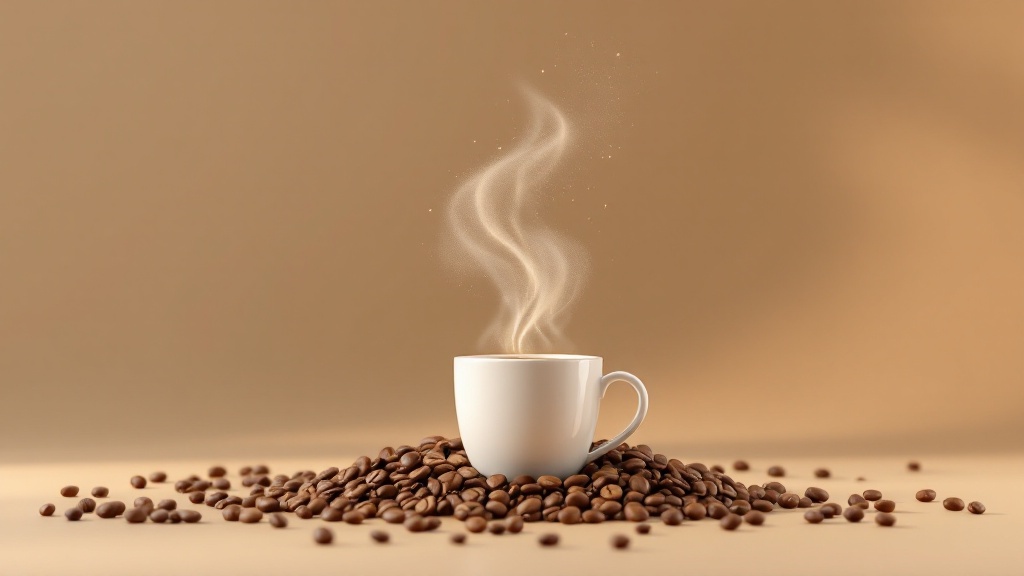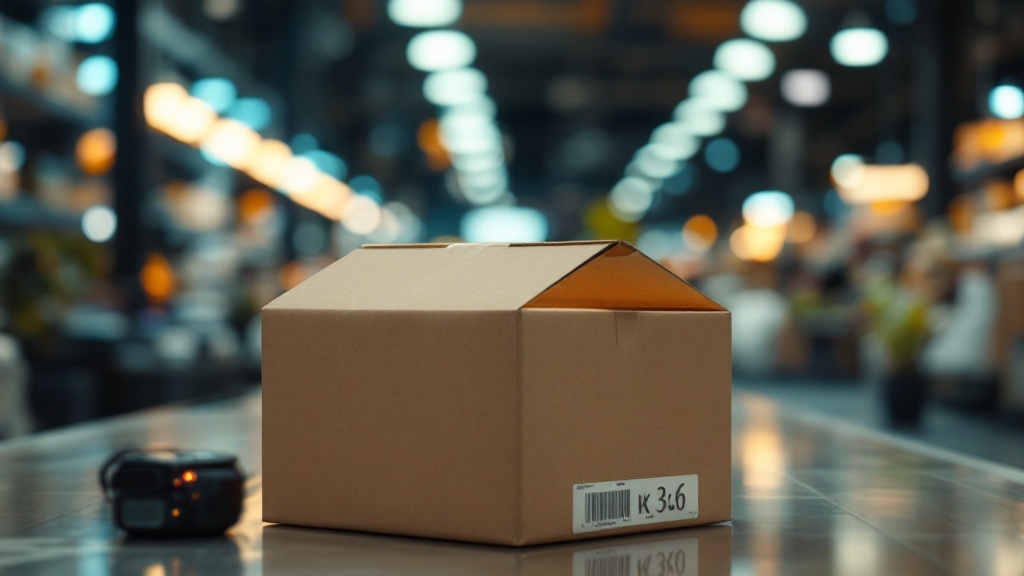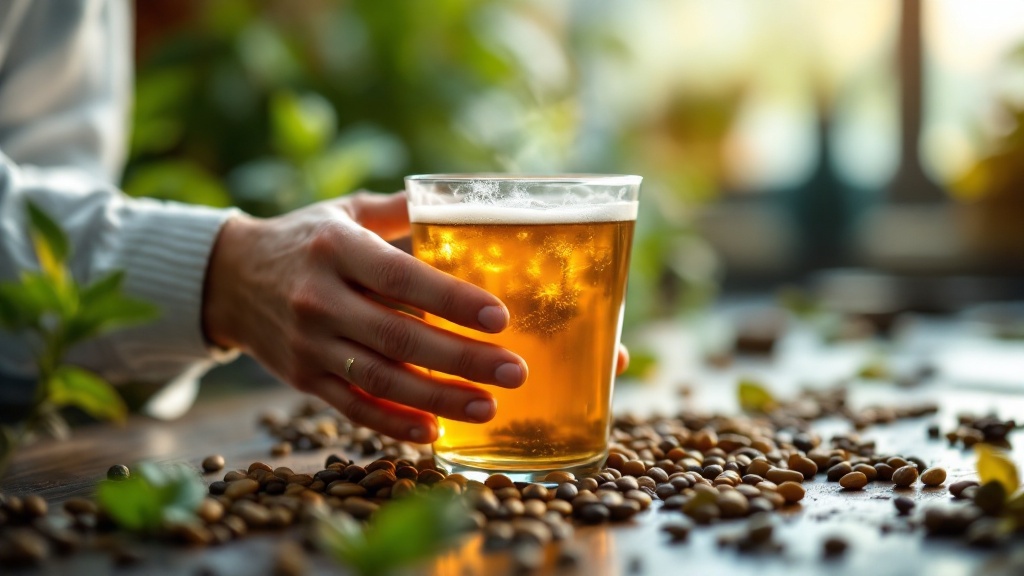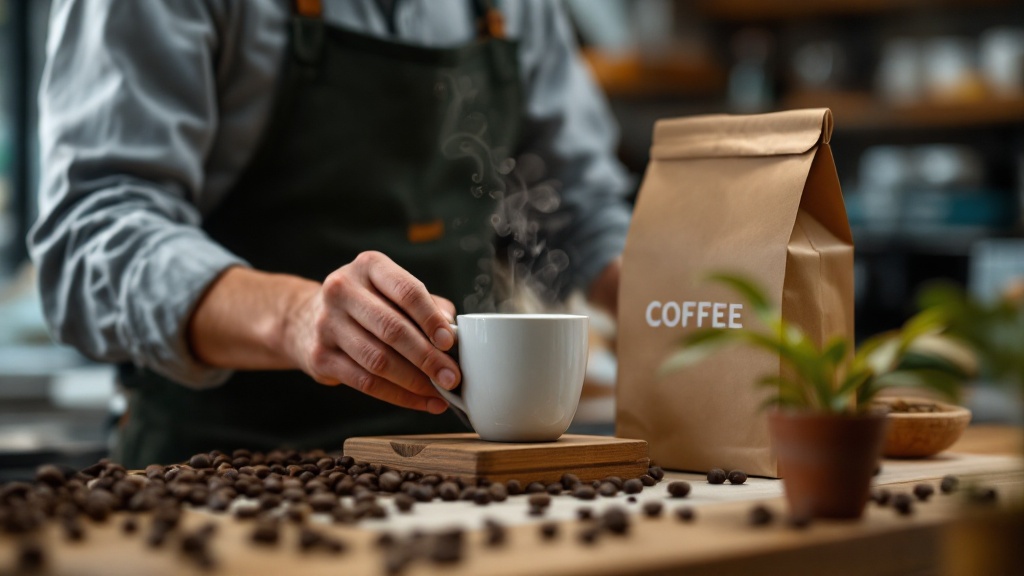Imagine waking up to the aroma of freshly roasted coffee beans delivered right to your doorstep, without the hassle of grocery store runs or shipping fees. This is the magic of coffee subscriptions with free shipping, a rapidly growing trend that’s transforming the way we experience our daily caffeine fix. From single-origin beans sourced from exotic locales to personalized blends crafted by expert roasters, coffee subscriptions offer a world of flavor and convenience.
The Rise of the Coffee Subscription

The coffee subscription model emerged in the early 2010s alongside the booming e-commerce landscape and the burgeoning specialty coffee movement. Pioneering companies like Blue Bottle and Trade Coffee recognized the opportunity to connect coffee lovers with high-quality, curated beans through a convenient subscription service. This direct-to-consumer (DTC) approach cut out the middleman, allowing for fresher coffee and a more personalized experience.
The COVID-19 pandemic further fueled the growth of coffee subscriptions. As people spent more time at home, the demand for convenient, high-quality coffee skyrocketed. This shift in consumer behavior solidified the coffee subscription as a staple for many, offering a reliable source of freshly roasted beans throughout uncertain times. Today, the global coffee subscription market continues its upward trajectory, projected to grow at a CAGR of 6.5% from 2023 to 2030, according to Statista.
DTC Coffee Roasting Profiles
A critical technical aspect of the successful coffee subscription model is the precise control and management of the coffee roasting profiles. These profiles, often created using specialized software and hardware such as Artisan, Cropster, or RoastMaster, dictate the temperature, time, and airflow during the roasting process. Each profile is meticulously designed to achieve a specific flavor profile, targeting parameters such as Maillard reaction onset temperature, rate of rise, and development time. Deviations from the optimal parameters can significantly impact the final cup of coffee, resulting in under-developed acidity, burnt notes, or a lack of desired aromatics. For instance, a lighter roast profile might target a first-crack temperature of around 390°F (199°C) with a slower rate of rise to emphasize the bean’s origin characteristics, while a darker roast could target 430°F (221°C) or higher with a faster rate of rise to achieve a bolder, more robust flavor. The data collected during the roasting process-temperature, time, and gas readings-are crucial for quality control and allow for consistent replication of the desired flavor profile across batches.
- Roast profiles are digitally stored and shared, ensuring consistency across batches and seasons.
- Data analysis of roast profiles helps identify optimal parameters for specific coffee origins and bean varieties.
- Real-time adjustments during roasting, based on sensor data, are crucial for achieving target flavor profiles.
- Different roasting machines may require profile adjustments due to variations in heat transfer and airflow.
- Detailed roast logs serve as a valuable record for troubleshooting and continuous improvement of the roasting process.
| Key Aspect | Roast Profile | Target Temp | Flavor Outcome |
|---|---|---|---|
| Lighter Roast | Slower rate of rise | 390°F (199°C) | Emphasizes origin characteristics |
| Darker Roast | Faster rate of rise | 430°F (221°C) | Bolder, robust flavor |
Free Shipping: The Perk That Percolates

In a competitive market, free shipping has become a key differentiator for coffee subscription services. Companies like Atlas Coffee Club and Bean Box have integrated free shipping into their subscription models, recognizing its value in attracting and retaining customers. For consumers, free shipping eliminates the added cost of delivery, making the overall subscription price more appealing.
From a business perspective, free shipping can be facilitated through bulk shipping contracts with carriers like USPS, FedEx, or DHL. While there are usually weight limits associated with free shipping offers (typically ranging from 12 oz to 5 lbs), these limits are generally sufficient for most coffee subscriptions. The perceived value of free shipping often outweighs any minor shipping restrictions, contributing significantly to customer satisfaction and loyalty.
Carrier Contract Negotiation
Securing favorable carrier contracts is paramount to the economic viability of offering free shipping for coffee subscription services. Negotiations should focus on achieving optimal pricing structures based on anticipated package weight and volume. For example, a service anticipating a monthly shipment volume of 10,000 units weighing between 1 and 3 pounds should target contracts with tiered pricing models offering significant discounts for high-volume shipments. These models typically involve agreements with carriers like USPS, FedEx, or DHL that incorporate dimensional weight calculations (taking into account package length, width, and height) to determine the final shipping cost. Companies must carefully analyze their shipping data to forecast volume and weight accurately, ensuring the contract reflects their actual needs and avoids penalties for exceeding agreed-upon weight or volume thresholds.
- Negotiate volume discounts based on projected monthly shipments (e.g., 10,000 units).
- Incorporate dimensional weight calculations into contracts to avoid unexpected costs.
- Compare rates from USPS, FedEx, and DHL to find the most cost-effective option.
- Include clauses addressing peak season surcharges and potential rate increases.
- Consider fuel surcharges and their potential impact on overall shipping costs.
- Request transparency in carrier pricing structures and fee breakdowns.
Navigating the World of Coffee Subscriptions

Choosing the right coffee subscription involves considering several factors. Subscription frequency is a key aspect, with options ranging from weekly to monthly deliveries depending on your consumption habits. Packaging plays a vital role in preserving freshness, and most services utilize airtight, resealable bags. Environmentally conscious consumers can also look for companies like Pact Coffee that utilize compostable packaging.
Customization is another important element. Many services allow subscribers to select their preferred grind size (whole bean, coarse, fine) and roast level (light, medium, dark). Some subscriptions, like Trade Coffee, even offer personalized recommendations based on your taste profile. These personalized recommendations, often powered by AI algorithms, allow you to discover new coffees tailored to your preferences.
AI-Driven Coffee Matching Algorithms
Many modern coffee subscription services leverage sophisticated AI algorithms to personalize the coffee selection process for subscribers. These algorithms typically employ machine learning techniques, specifically collaborative filtering and content-based filtering, to generate tailored recommendations. Collaborative filtering analyzes user data, such as ratings, reviews, and purchase history, to identify patterns and predict preferences based on similar users’ choices. For example, if a user consistently rates high-acidity, light-roast Ethiopian Yirgacheffe coffees highly, the algorithm will likely recommend other coffees with similar flavor profiles and origins. This approach leverages the collective wisdom of the user base to offer personalized suggestions.
- Algorithms consider factors beyond just ratings, including brewing methods (e.g., pour-over vs. espresso) and preferred roast levels.
- Content-based filtering analyzes coffee bean characteristics (e.g., origin, processing method, flavor notes) to suggest similar profiles.
- Some services use natural language processing (NLP) to analyze user reviews and identify key flavor preferences expressed in text.
- AI can help discover hidden correlations between seemingly disparate coffee preferences, leading to unexpected yet satisfying matches.
- The accuracy of recommendations improves over time as the algorithm learns from more user data and interactions.
The Future of Coffee Subscriptions

Innovation continues to shape the coffee subscription landscape. AI-powered personalization, blockchain technology for transparency, and flexible subscription options are just some of the exciting developments. AI allows companies to refine their recommendations, offering subscribers a curated selection tailored to their evolving tastes.
Blockchain technology is being implemented to track coffee origins and ensure ethical sourcing, providing consumers with increased transparency about the beans they enjoy. Flexible subscriptions, allowing customers to pause, skip, or modify shipments without penalty, add another layer of convenience. These advancements are further solidifying the coffee subscription’s position as a modern, convenient, and personalized way to enjoy high-quality coffee.
Blockchain in Coffee Traceability
Implementing blockchain technology within the coffee subscription model offers a significant advancement in supply chain transparency and ethical sourcing. The immutable nature of blockchain allows for the creation of a verifiable record of the coffee bean’s journey, from farm to cup. This involves recording key data points at each stage, including the farm’s geolocation coordinates, harvesting dates, processing methods, and transportation logistics. Each transaction, verified through cryptographic hashing and consensus mechanisms like Proof-of-Work or Proof-of-Stake, adds a new block to the chain, creating an auditable history resistant to tampering. This granular level of tracking addresses concerns about ethical sourcing and fair trade practices, providing consumers with verifiable evidence of sustainable and responsible sourcing.
- Consumers can scan a QR code on the packaging to view the bean’s complete journey.
- Blockchain enhances traceability beyond current certification systems, providing more detailed information.
- Data points can include information on farm workers’ wages and working conditions.
- Improved transparency helps identify and address inefficiencies in the supply chain.
- Reduces the risk of fraud and counterfeit products by ensuring authenticity.
- The system can be used to track carbon footprint throughout the process.
Brewing a Better Future: Sustainability and Ethics

Many coffee subscriptions prioritize sustainability and ethical sourcing. Certifications like Fair Trade, Rainforest Alliance, and Organic are commonly highlighted, reflecting a growing consumer demand for environmentally and socially responsible practices. These certifications guarantee that the coffee is grown under fair labor conditions and with environmentally sustainable farming methods.
Choosing a coffee subscription that emphasizes these values allows you to enjoy your daily cup knowing that you’re supporting farmers and protecting the environment. This focus on sustainability is not only good for the planet but also enhances the overall coffee experience, adding a layer of meaning to every sip.
Shade-Grown Coffee Cultivation
Shade-grown coffee cultivation represents a crucial aspect of environmentally sustainable coffee production. Unlike sun-grown methods which necessitate deforestation and monoculture planting, shade-grown coffee utilizes a polyculture system. This involves integrating coffee plants within a diverse forest canopy, mimicking the natural understory environment. This approach offers several significant ecological advantages. The shade canopy reduces the need for irrigation, conserving water resources, particularly critical in water-stressed regions where much coffee is produced. It also mitigates soil erosion, preventing loss of topsoil and maintaining soil fertility, which is important for long-term productivity and minimizing the need for synthetic fertilizers.
- Supports biodiversity by providing habitat for birds, insects, and other wildlife, increasing ecosystem health.
- Reduces reliance on pesticides and herbicides due to the natural pest control offered by the diverse ecosystem.
- Produces higher-quality coffee beans due to slower ripening and richer flavor development under shade.
- Improves carbon sequestration, helping to mitigate climate change by storing atmospheric carbon within the forest.
- Offers economic benefits to farmers through diversified income streams from multiple crops and ecosystem services.
Expert Insights on the Coffee Subscription Revolution

Industry experts recognize the transformative impact of coffee subscriptions. Peter Giuliano, Executive Director of the Specialty Coffee Association, notes that coffee subscriptions are “reshaping how consumers interact with coffee, offering both convenience and education about different origins and roasts.”
James Hoffmann, renowned coffee expert and author, emphasizes the importance of balancing quality with convenience in a successful subscription model, highlighting free shipping as a “major factor in customer retention.” These expert opinions underscore the value proposition of coffee subscriptions – providing a convenient way to access high-quality coffee while also learning about the nuances of different beans and roasts.
Roast Level & Subscription Logistics
The success of a coffee subscription service hinges critically on maintaining consistent roast level across shipments. Variations in roast level, even minor ones, can significantly alter the flavor profile of the coffee, leading to customer dissatisfaction. Maintaining consistency requires precise control across multiple stages of the coffee bean’s journey from green bean to the consumer’s cup. This begins with careful green bean sourcing and quality control, ensuring consistent bean density, moisture content, and defects. Different roast profiles necessitate specific roasting parameters; precise control of temperature (measured in degrees Celsius), time (measured in minutes), and airflow (measured in CFM – cubic feet per minute) using a commercial-grade roaster is crucial. Even slight variations in these parameters can alter the Maillard reaction and the development of key volatile compounds responsible for the coffee’s aroma and flavor, resulting in deviations from the target roast level. Furthermore, the post-roasting cooling process is equally important; rapid and even cooling prevents uneven development of volatile compounds and helps preserve the intended flavor profile.
- Accurate roast level labeling is crucial for managing customer expectations and minimizing returns due to unexpected flavor profiles.
- Subscription boxes should include details on the specific roast date to ensure optimal freshness upon arrival.
- Packaging must protect beans from moisture and temperature fluctuations during transit to maintain roast quality.
- Regular quality control checks throughout the entire supply chain (from green bean to final product) are essential.
- Data logging of roasting parameters allows for continuous improvement and identification of process variations.
- Consider offering a range of roast levels within the subscription options to cater to diverse customer preferences.
Conclusion: Your Perfect Cup Awaits

Coffee subscriptions with free shipping offer a compelling combination of convenience, quality, and value. Whether you’re a seasoned coffee connoisseur or just beginning your journey into the world of specialty coffee, a subscription can unlock a world of flavor and simplify your daily ritual. With a growing number of options available, you can find the perfect subscription to match your taste preferences, budget, and commitment to sustainability. So, ditch the grocery store grind and embrace the convenience of having freshly roasted coffee delivered right to your door, free of charge. Your perfect cup awaits.
Roast Level Impact on Extraction
The roast level of coffee beans significantly impacts the extraction yield and resulting cup characteristics during brewing. Lighter roasts, exhibiting higher acidity and a brighter flavor profile, possess a denser cellular structure with a greater proportion of undeveloped sugars and acids. This necessitates a finer grind size and longer extraction time to fully solubilize these compounds. Conversely, darker roasts, characterized by lower acidity and a bolder, more bitter flavor, undergo significant cellular degradation during the roasting process, resulting in a more porous bean structure. This allows for a coarser grind size and shorter extraction time to achieve optimal extraction. Improper grind size selection relative to roast level can lead to under-extraction (sour, weak coffee) or over-extraction (bitter, astringent coffee).
- Lighter roasts often require a grind size as fine as espresso for optimal extraction.
- Darker roasts can tolerate coarser grinds, similar to those used for French press.
- Extraction time is directly impacted; lighter roasts need longer brew times.
- The Maillard reaction, prominent in darker roasts, contributes to its characteristic flavor and reduces acidity.
- Over-extraction in lighter roasts can manifest as a harsh, astringent bitterness.
- Under-extraction in darker roasts might lead to a muddy, flat taste lacking body.
| Roast Level | Grind Size | Extraction Time | Flavor Profile |
|---|---|---|---|
| Lighter Roasts | Fine (espresso-like) | Longer | Bright, acidic |
| Darker Roasts | Coarse (French press-like) | Shorter | Bold, bitter |

